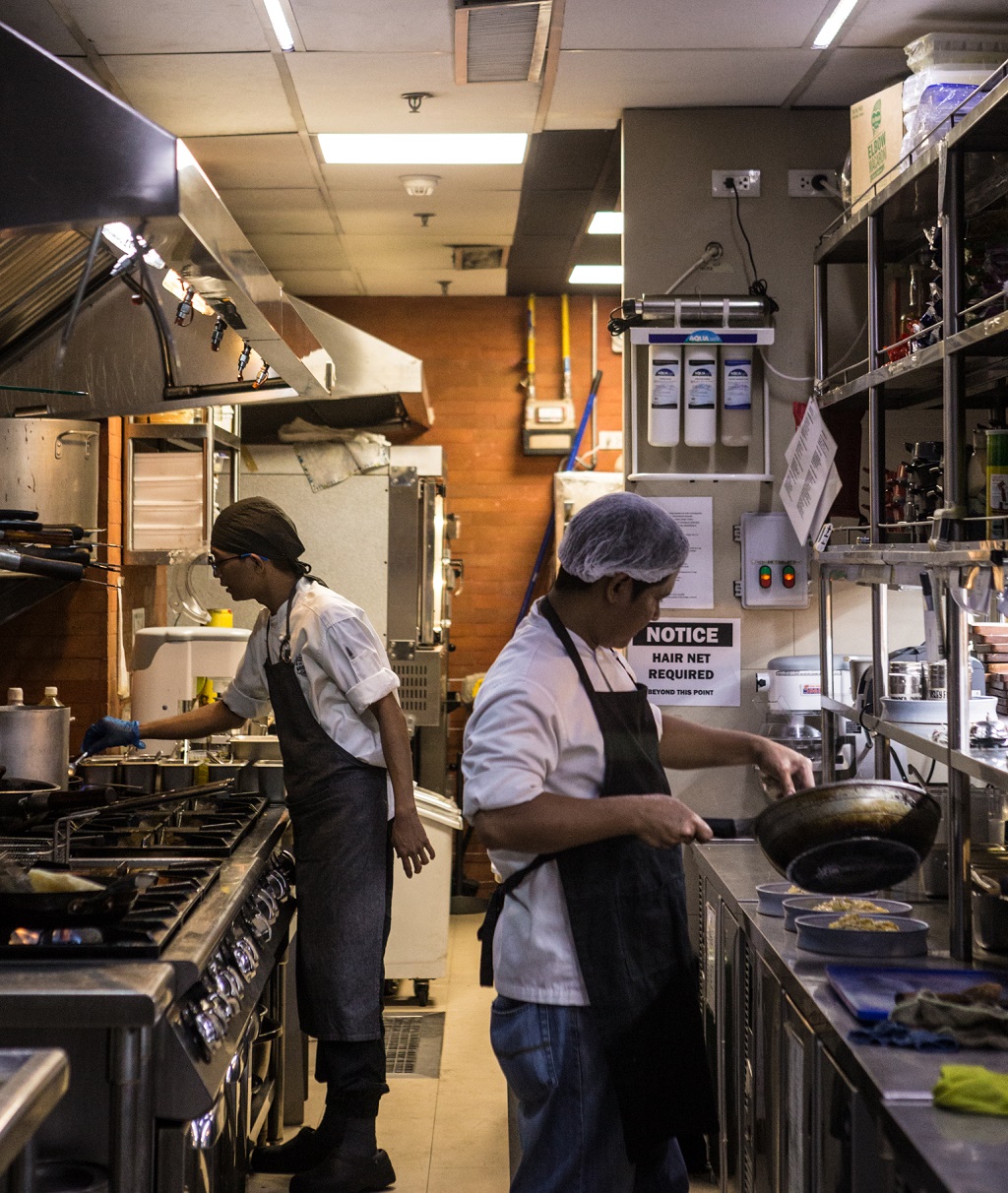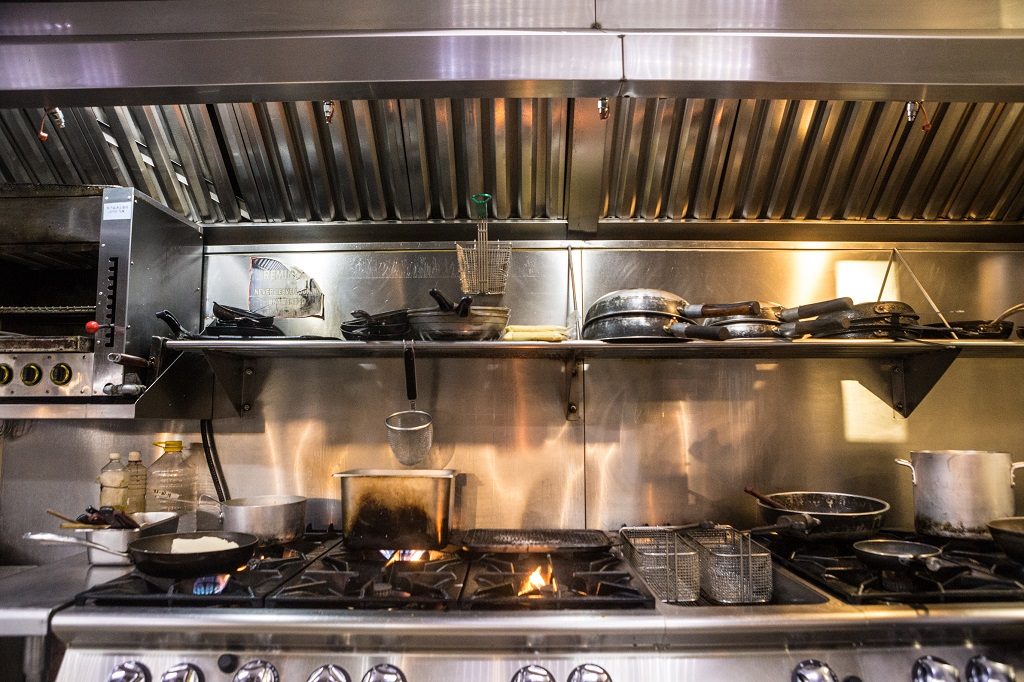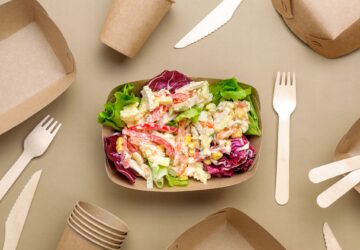Restaurant kitchens are often thought of as fast-paced, hot spaces filled with busy chefs preparing, cooking, plating, and delivering food. This isn’t entirely wrong and you should be prepared for it once you open your own restaurant. Because this is the command center of your restaurant, your kitchen setup is a crucial factor in operating efficiently.
Patrick Go and Miko Aspiras are no strangers to kitchen mishaps. After working in several hotel and restaurant kitchens, they have come up with their own understanding of the kitchen dynamics to eventually adapt them into their own spaces.

Space is everything
Ideally, restaurant kitchens should take up around 30 percent of the available space in the establishment. You need to have a clear vision of what your menu will be and how many customers to serve to have a general idea of the space and equipment needed in the kitchen.
At the same time, organize the space in such a way that the workflow is smooth. Consider temperature levels when streamlining the food preparation space. The cooking area should be separated from the freezer and chiller area, in the same way that the storage and food preparation areas are separated from the service area. “The goal of designing a proper kitchen is to make every move efficient,” says Go.
Pricier is usually better
Unless you’re okay with replacing your kitchen tools and equipment every five months or less, investing in quality tools and equipment will require more cash. “Based on experience, branded equipment is usually more expensive but it does the same job as the cheaper ones. The only difference is the lifespan,” says Go.
While it may be tempting to purchase multipurpose tools and equipment in dollar stores or Divisoria and Quiapo, they are not designed for day-to-day use and they probably might not last. Some items are better bought in trusted kitchen supply shops and service providers.
“Chefs and restaurateurs should splurge in ovens and chillers because these are the backbones of the production. But if it’s something for storage, ‘yung hindi naman kailangang bukas ng bukas or ginagamit every day, then pwede siyang cheap lang,” says Aspiras.

Let the kitchen breathe
Both chefs emphasize the importance of proper ventilation inside the kitchen. This all boils down to the exhaust you use. “It controls the smell of the food in the whole restaurant and it maintains the proper temperature in the kitchen,” says Go. It also filters pollutants in the kitchen and captures and contains cooking vapors and smoke.
“Kapag hindi maganda ‘yung circulation ng air sa kitchen, it can suffocate. Your kitchen equipment can also overheat and explode,” says Aspiras. Not all exhausts are made equal. Some exhausts can also double as a fire extinguisher like the one at Le Petit’s.
Sharpen those knives
The knife is one of the most essential tools in the kitchen, but you don’t have to buy a whole set and use every single kind out there. All things being equal, you only need four: a chef’s knife that can do almost all your slicing and cutting jobs; a paring knife that can also slice and cut food that are too small for the chef’s knife; a long, serrated knife that can slice through waxy food and slippery food exteriors; and a boning knife that can move and flex while slicing through fish, meat, or poultry.

Clean and organize as you go
Aside from equipment breaking down during service, misplacing or losing tools is also a common problem in the kitchen. “We make sure that all equipment are always clean and well-maintained, and we usually implement a system in which tools are always organized in a specific place,” says Go.
Because there’s so much food and raw ingredients coming in the kitchen and being served to customers, maintaining cleanliness is a must. Worktops and chopping boards should be thoroughly cleaned because they touch the food to be eaten; a dishwasher can effectively eliminate bacteria from tableware; cloths should be washed and left to dry; and hands should be washed before food preparation and after touching raw food, pets, trash bins, and going to the toilet.
“For me to impose cleanliness within the restaurant, I equip my staff with hygiene and cleaning tools to use in the kitchen. We really use dishwashing cleaner and I don’t dilute it in water. We also change cleaning agents from time to time. ‘Yung bacteria kasi they become immune to a certain type of cleaning agent, so we switch up the products we use,” says Aspiras.





